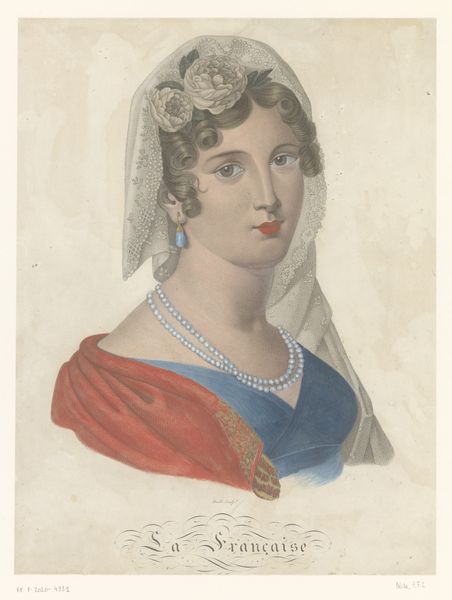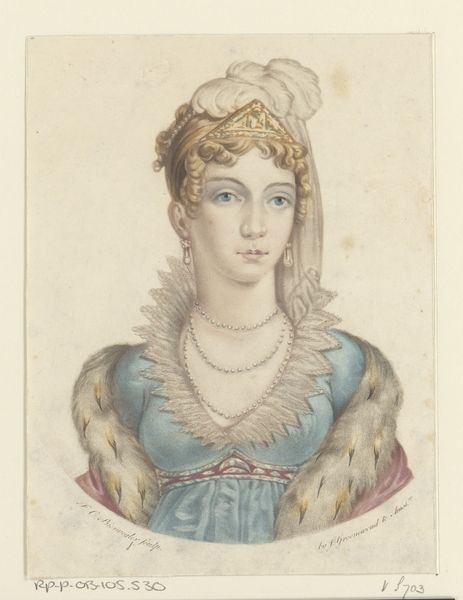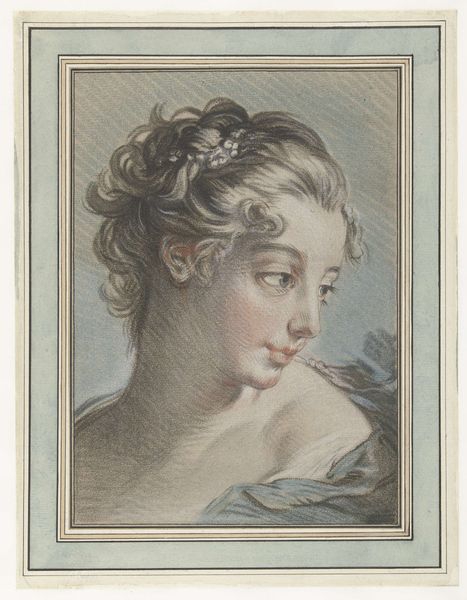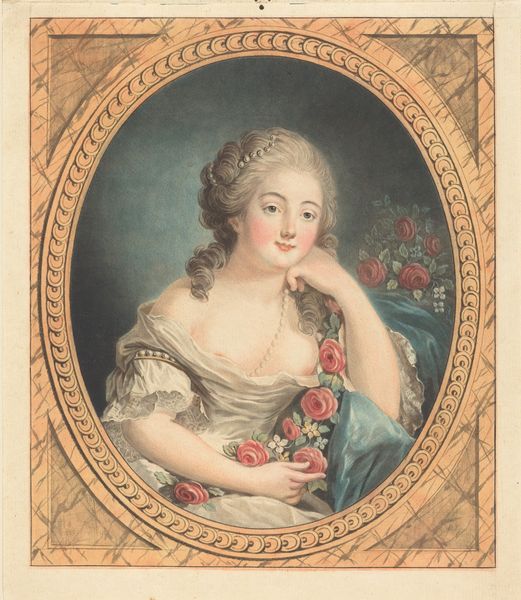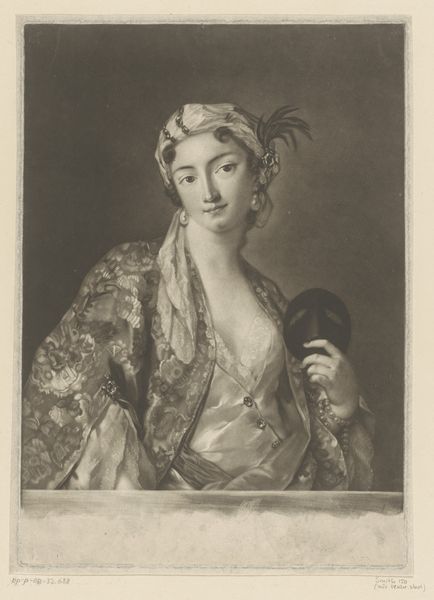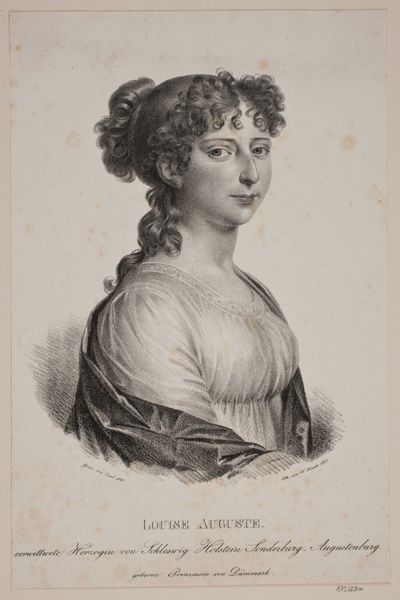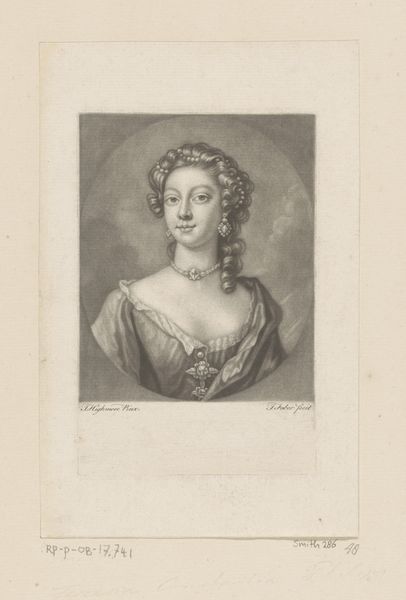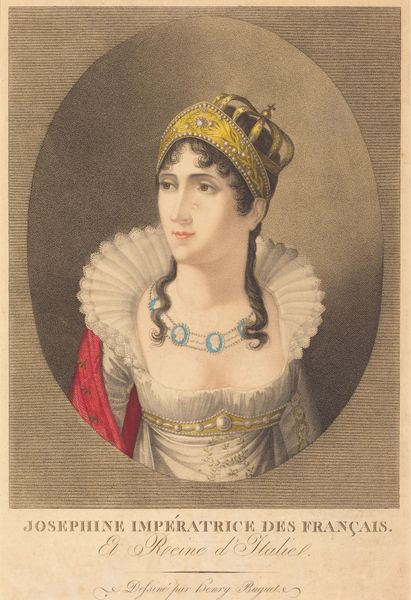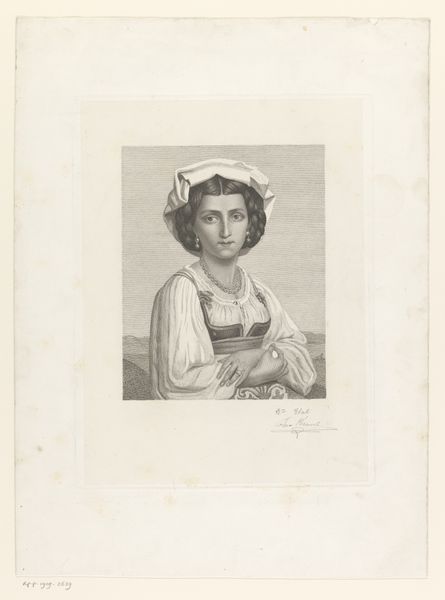
drawing, print, pen
#
portrait
#
drawing
#
neoclacissism
# print
#
romanticism
#
pen
#
portrait drawing
#
portrait art
Dimensions: height 470 mm, width 325 mm
Copyright: Rijks Museum: Open Domain
Curator: Here we have "Vrouw met gouden oorbel, ketting en witte sluier," which translates to "Woman with Golden Earring, Necklace, and White Veil." It's an intriguing portrait drawing from the period of 1799 to 1822 by Jean Francois Badoureau. The work blends both neoclassical and romantic styles and, most notably, is executed with a pen as a print. Editor: What immediately strikes me is its unexpected mood. She seems poised, confident even, yet there’s a touch of melancholy in her gaze. Is it just me, or does that golden jewelry hint at something more… like a subtle protest? Curator: It's a delicate balancing act of visual cues. The jewelry could signify status, naturally. But you're right, its starkness against the lighter fabric perhaps directs our attention beyond the surface. Notice how Badoureau employs this deliberate contrast to portray both opulence and restraint, emblematic of the societal constraints versus individual desires that women faced during this transitional era. The white veil might traditionally imply purity or modesty, yet the elaborate floral arrangement disrupts such direct interpretation. Editor: Ah, disruption, that’s the word! Because look at those precisely placed curls – practically fighting against the flowing drape of her headpiece. A real power struggle being displayed! And what about "La Legerete" inscribed just below? That adds another layer to the enigma. Curator: Indeed, the inscription invites contemplation of lightness versus weight—not merely aesthetic attributes but states of being. In the symbolic lexicon of the late 18th and early 19th centuries, lightness also carried moral implications—suggesting superficiality or frivolity. Therefore, placing "lightness" in context with the portrait potentially critiques societal expectations placed upon women. Badoureau challenges viewers to move beyond face value, searching depth within apparent gentility. Editor: Which, you know, totally works. I walked in expecting your typical romantic period artwork, all sweetness and soft focus, but it holds me for the way it invites active participation with its subject's experience! So what else have you discovered here about Badoureau that strikes a new symbolic chord? Curator: Primarily that Badoureau captures this transitional period deftly, illustrating the shift in visual paradigms whilst imbuing a certain intimacy to it. Perhaps as we navigate the visual remnants from any specific era, we can always strive to read between the lines—discovering complex human narratives resonating beneath aesthetic preferences of that period. Editor: Makes you appreciate it even more, doesn't it? These historical echoes. Makes her feel way less "remote portrait" and a lot more real!
Comments
No comments
Be the first to comment and join the conversation on the ultimate creative platform.
